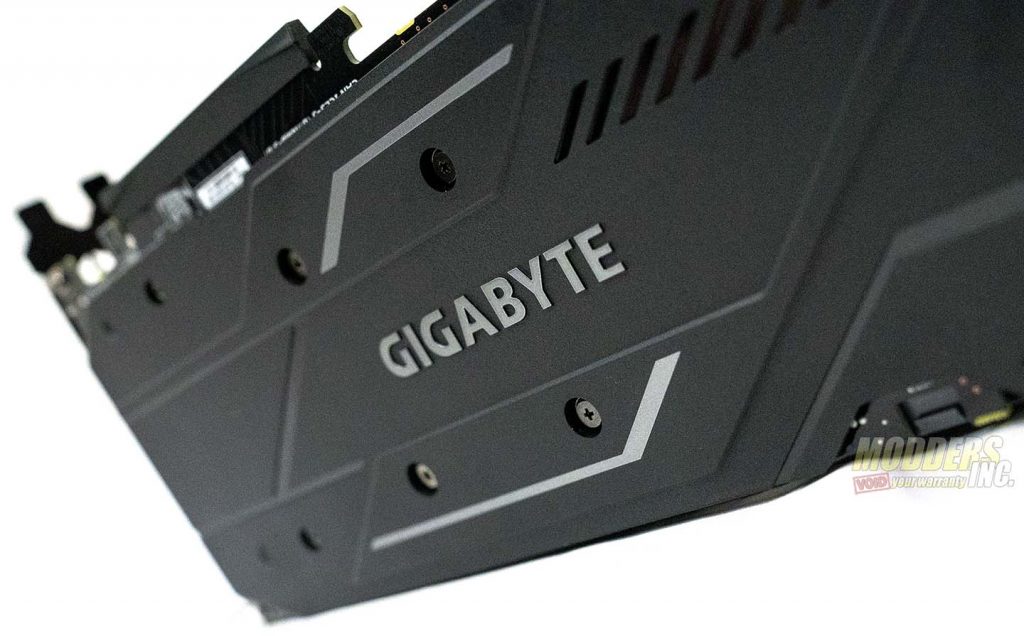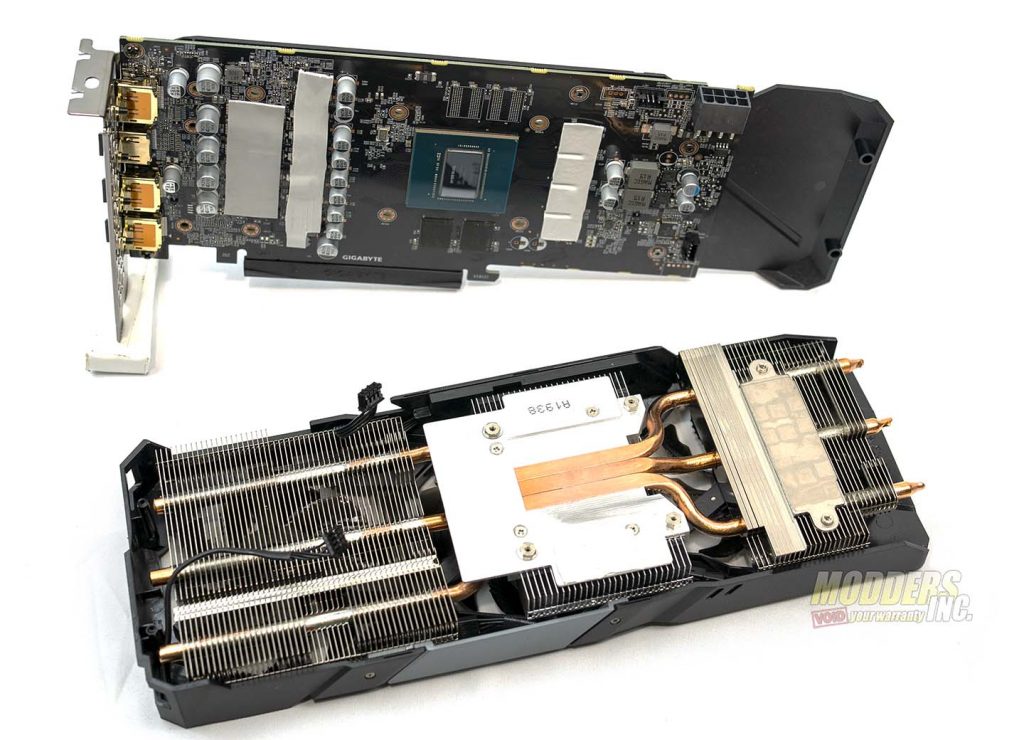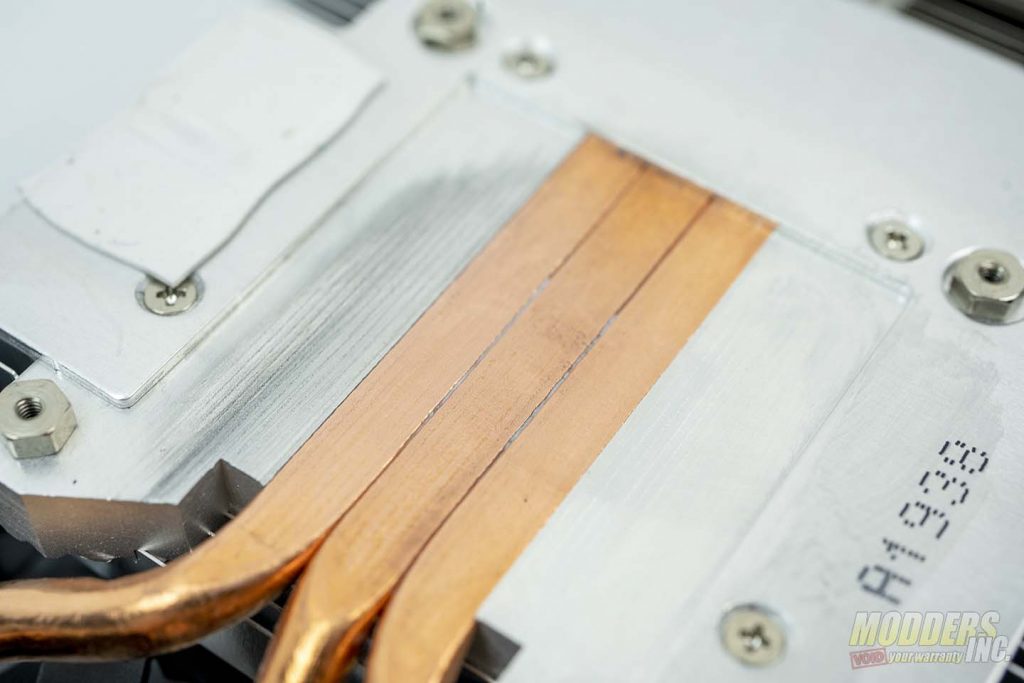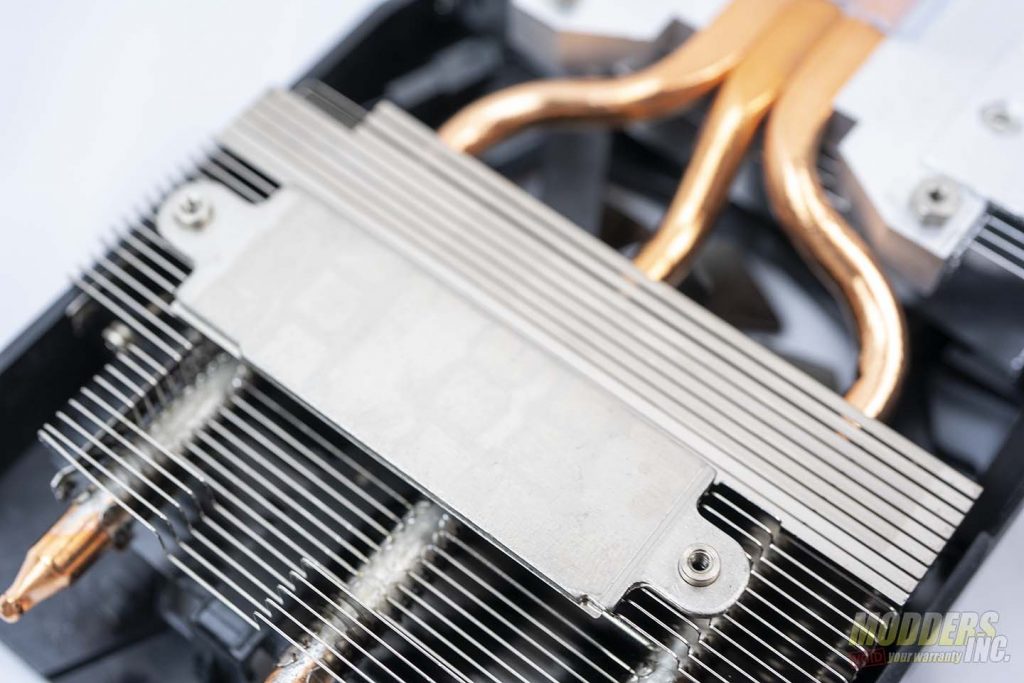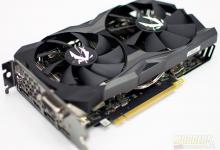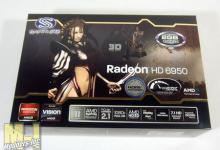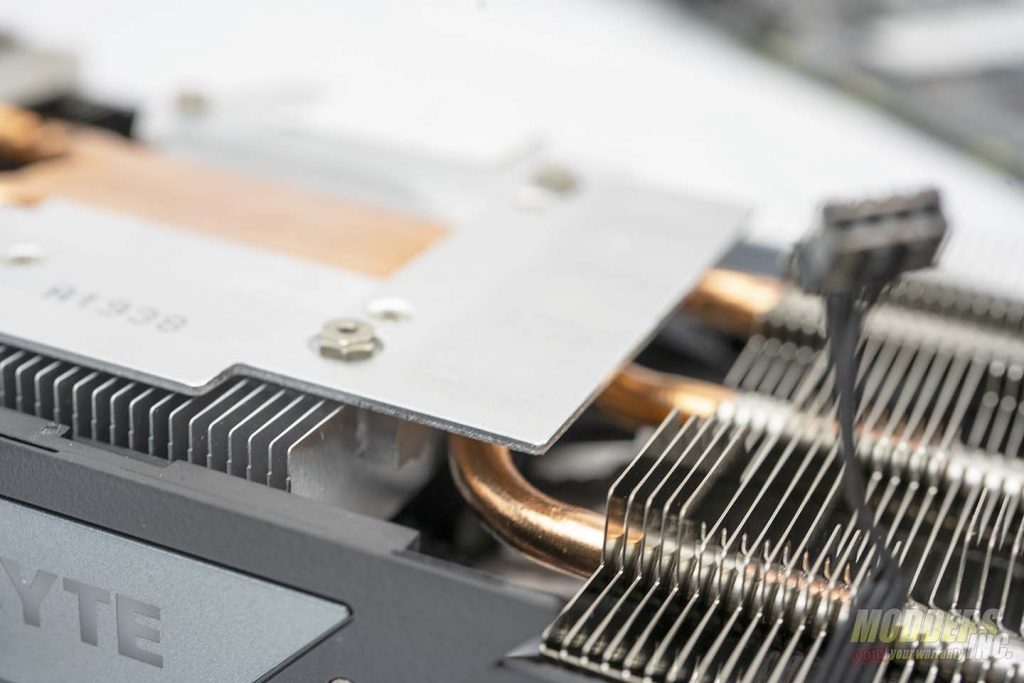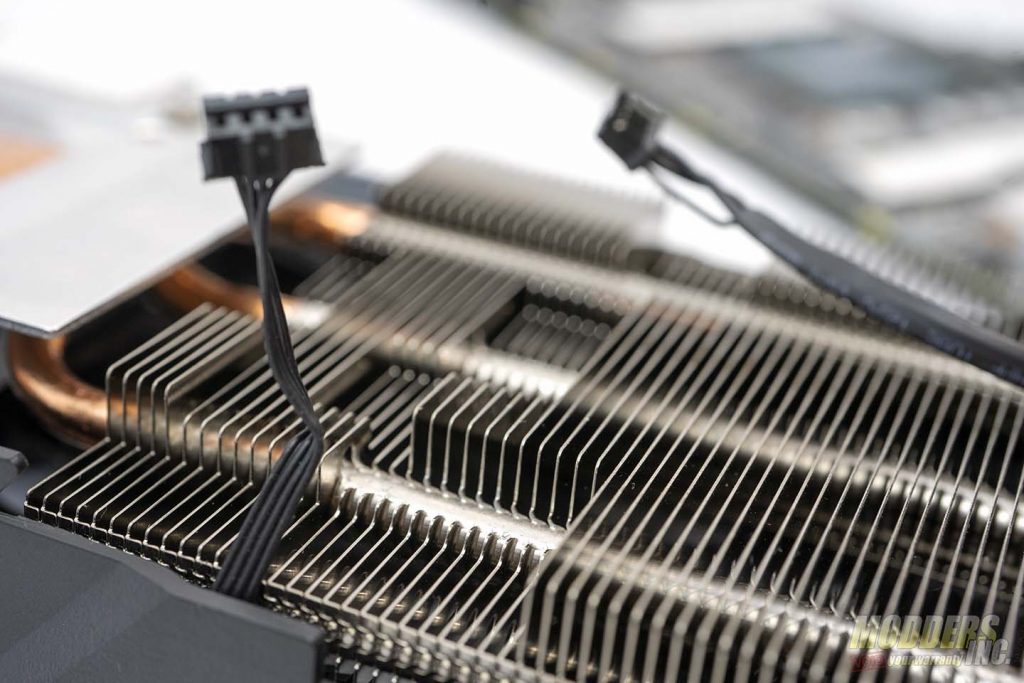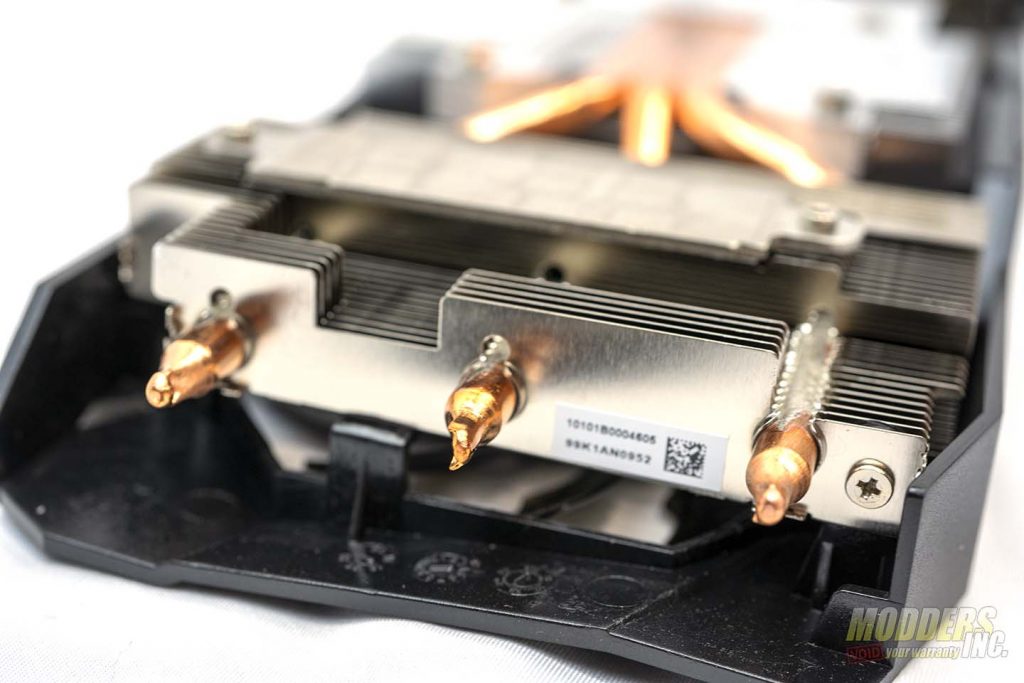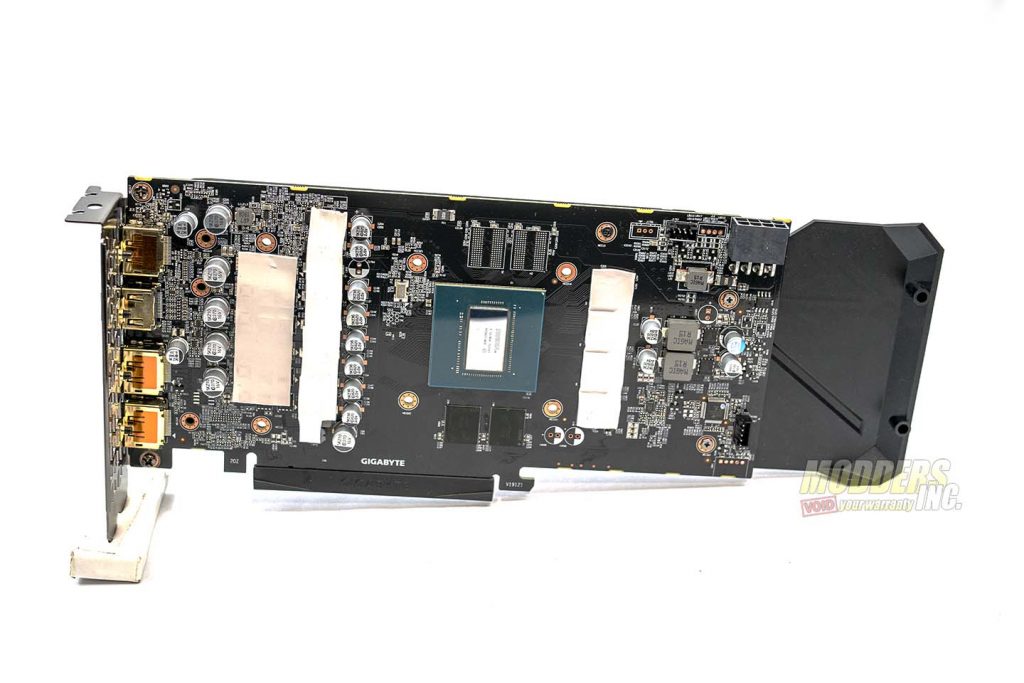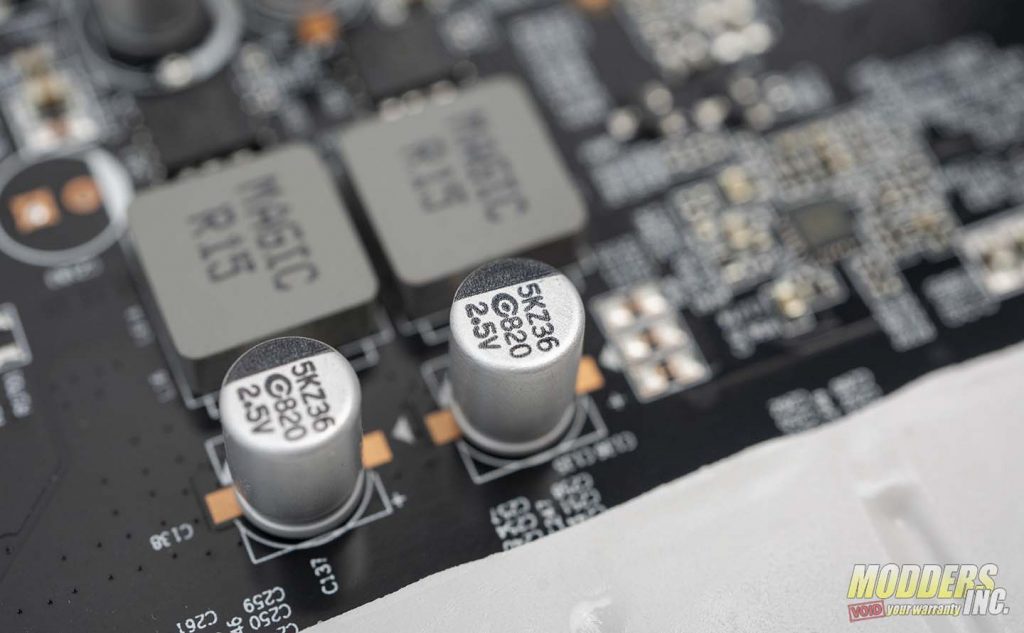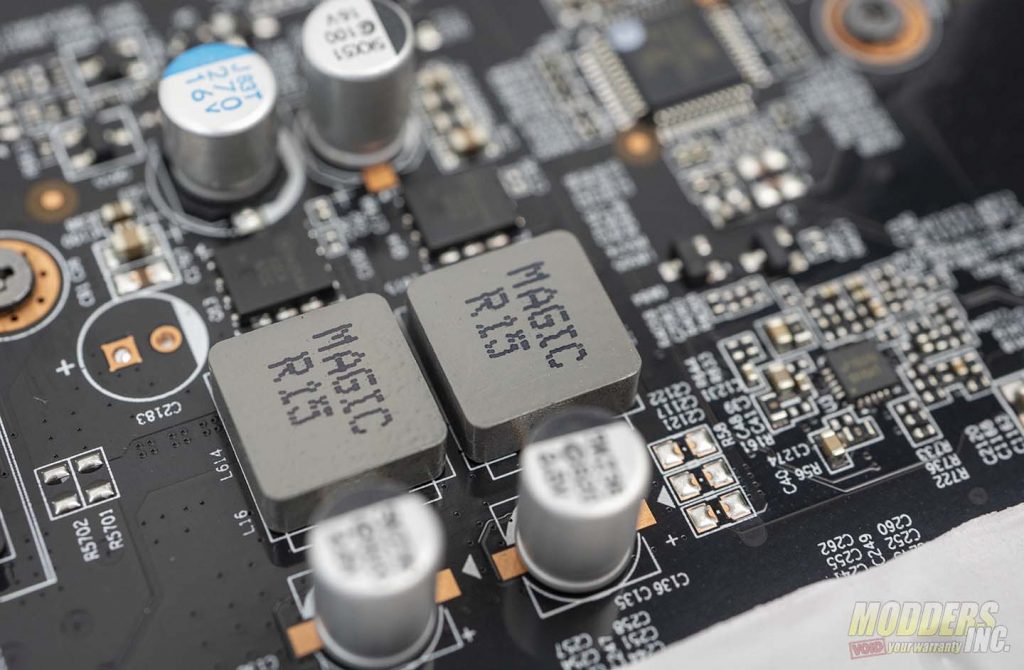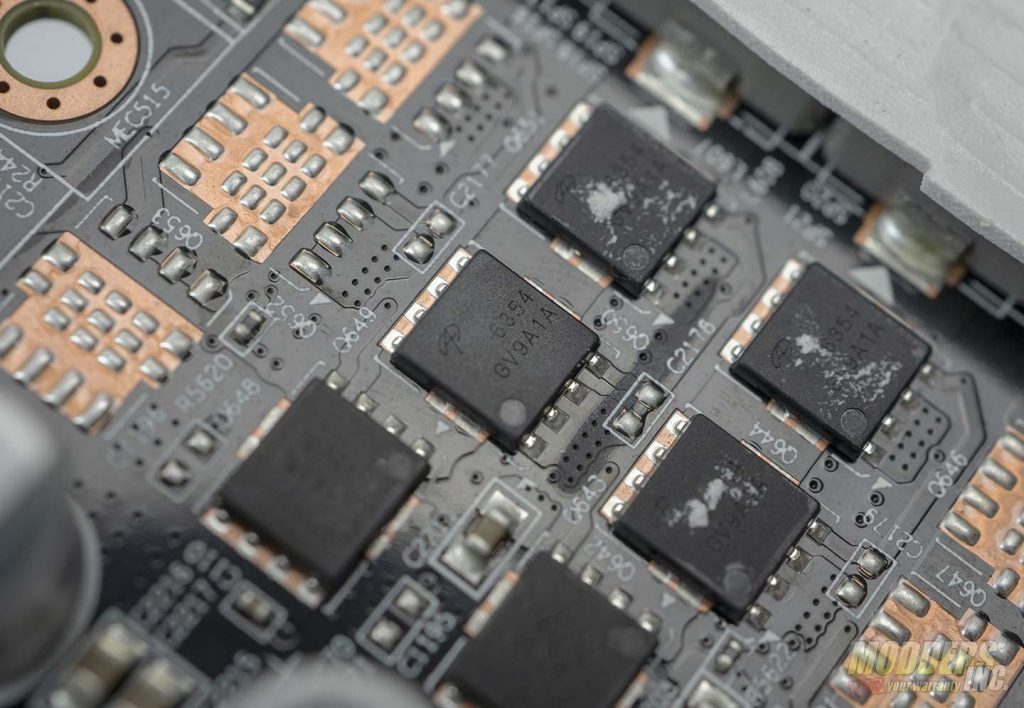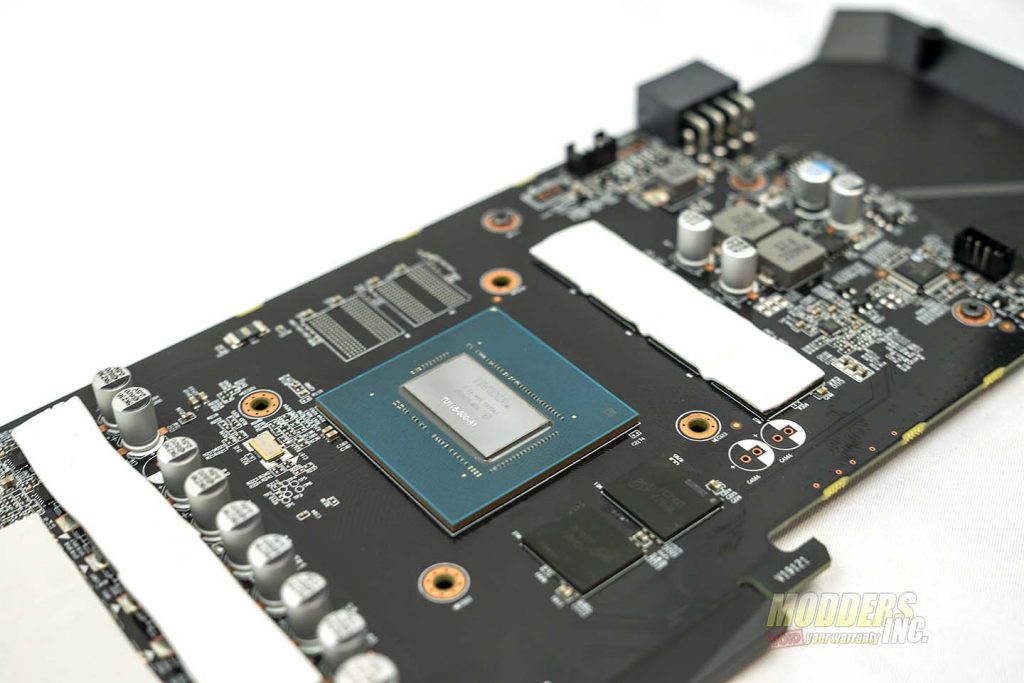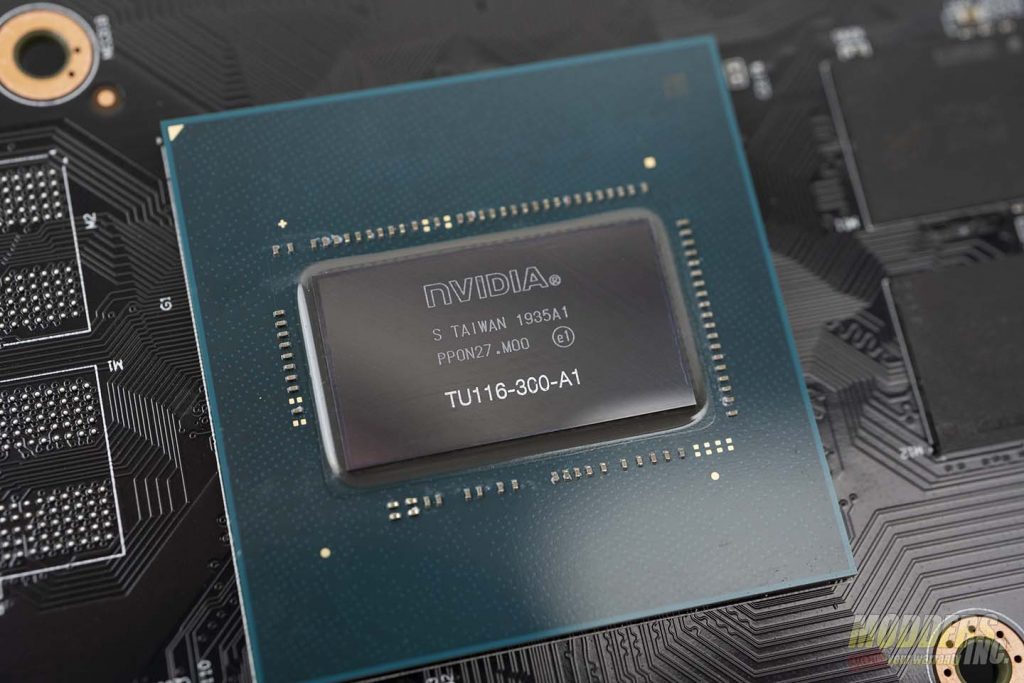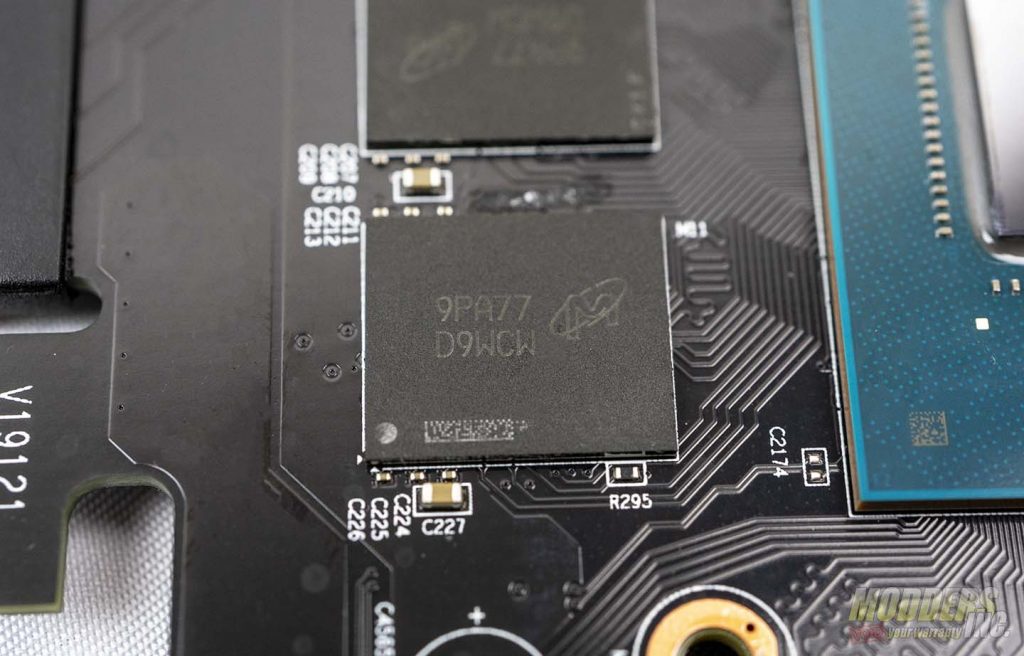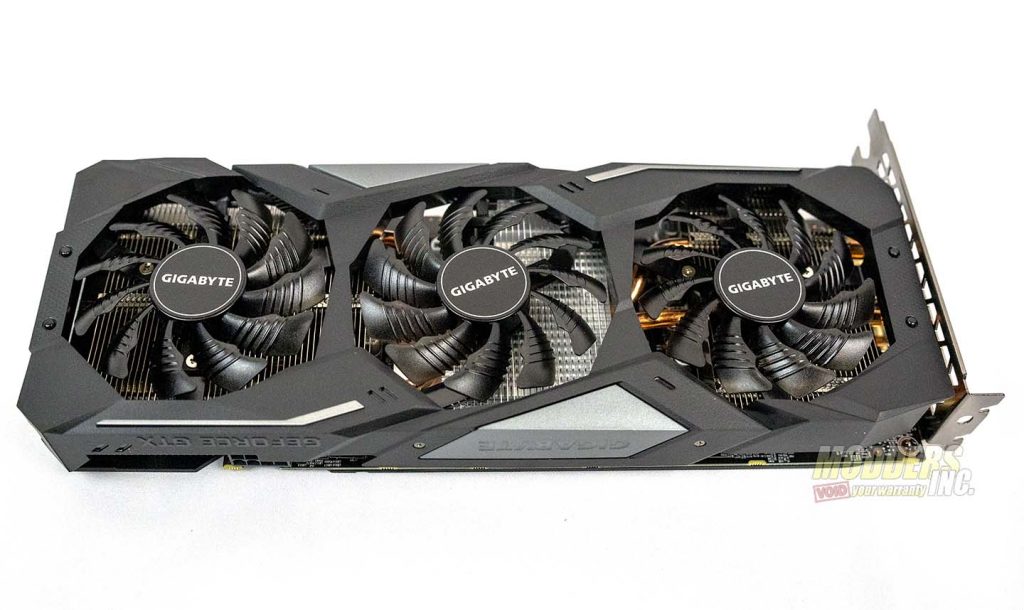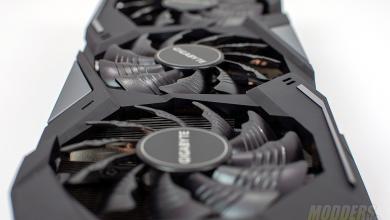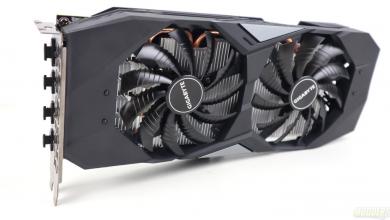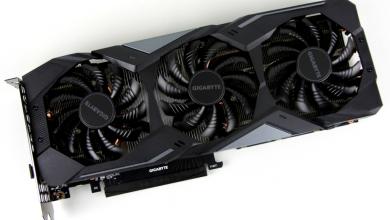A Closer Look at the Gigabyte 1660 Super – Internals
Like with any other graphics card review we do at Modders-Inc, we disassembled the Gigabyte 1660 Super to get a closer look at not only the PCB and GPU dye but also the heatsink at the heart of the Windforce 3X cooler. To remove the Windofrce 3X cooler, there are a series of six screws on the backplate. Four of these screws are placed at the four corners of the GPU itself. These four screws each have a small spring affixed to them. When reassembling the graphics card, these springs help to prevent you from over-tightening the screws and potentially damaging the GPU. The other two screws are located to the left of the GPU screws.
Once disassembled, there are two cables four-pin headers that you must unplug. One of these cables powers the fans, the other powers the RGB lighting on the side of the Gigabyte 1660 Super. The GPU dye makes contact with three composite heat-pipes. In addition to the GPU, there are cold plates for both the VRAM and MOSFETs as well. Also, the fins on the area of the heatsink that touch the chokes are flattened. This gives more contact surface area to the thermal pads covering the chokes, helping to dissipate more heat.
The cold plate for the VRAM is attached to a much thicker plate that surrounds the three composite heat-pipes that make direct contact with the GPU dye. The actual fins that make up the heatsink are cut at several different heights throughout the length of the cooler. This allows for maximum points of contact between the cooler and the components on the PCB that produce heat. This is part of the reason why the Windforce 3X cooler is so efficient at dissipating heat.
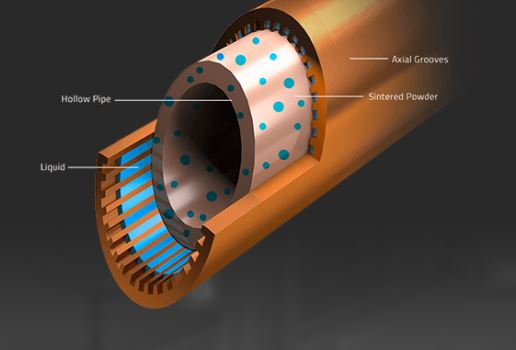
The Gigabyte 1660 Super has thermal pads that cover the memory, chokes, and MOSFETs on the PCB. The thermal pads are used to help dissipate heat from the memory and power delivery.
The Gigabyte 1660 Super is an Ultra Durable certified VGA card. This means the Gigabyte 1660 Super uses Ultra Durable certified metal chokes and solid capacitors. In addition, the Gigabyte 1660 Super has 2 ounces of copper built into the PCB, uses tier 1 memory and lower Rds(on) MOSFET. This means that less power is going to be lost across the MOSFET, making the card more efficient and producing less heat. The 3+2 power phase on the reference card has been beefed up to a 4+2 power phase on the Gigabyte 1660 Super Gaming OC. The 4+2 power phase allows the MOSFET to run at a lower temperature. In addition, each MOSFET has both load protection and over-temperature protection built-in.
The Gigabyte 1660 Super is based on Nvidia’s Turing architecture and built on its 12 NM process. The heart of the card is based on their TU116 GPU. To be exact, TU116-300-A1 the number engraved on the GPU dye. As for the VRAM, its made by Micron and stamped with 9PA77 D9WCW with D9WCW being the FBGA code for the module. For the spec sheet on this GDDR6 VRAM, go to this page: https://www.micron.com/products/graphics-memory/gddr6/part-catalog/mt61k256m32je-14.
Now that our Gigabyte 1660 Super Gaming OC is reassembled, its time to get into the actual performance of this card.
